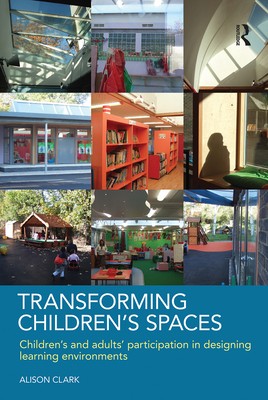
- We will send in 10–14 business days.
- Author: Alison Clark
- Publisher: Routledge
- ISBN-10: 0415458609
- ISBN-13: 9780415458603
- Format: 15.6 x 23.4 x 1.3 cm, minkšti viršeliai
- Language: English
- SAVE -10% with code: EXTRA
Reviews
Description
How can young children play an active role in developing the design of learning environments?
What methods can be used to bring together children's and practitioners' views about their environment?
What insights can young children offer into good designs for these children's spaces?
With the expansion of early childhood education and the move to 'extended schools', more young children will spend more time than ever before in institutions. Based on two actual building projects, this book is the first of its kind to demonstrate the possibilities of including young children's perspectives in the design and review of children's spaces.
Situated at the heart of the debate about the relationship between the built environment and its impact on children's learning and wellbeing, Transforming Children's Spaces
- provides insights into how young children see their environment
- discusses children's aspirations for future spaces
- develops the 'Mosaic approach', pioneered by the author, as a method for listening to young children and adults
Emphasising the importance of visual and verbal methods of communication, this fascinating book demonstrates how practitioners and young children can articulate their perspectives, and shows how participatory methods can support new relationships between children, practitioners and architects.
This book is essential reading for those who work in children's spaces and for those who design them as well as being of general interest to those studying education and childhood studies.
EXTRA 10 % discount with code: EXTRA
The promotion ends in 21d.22:49:41
The discount code is valid when purchasing from 10 €. Discounts do not stack.
- Author: Alison Clark
- Publisher: Routledge
- ISBN-10: 0415458609
- ISBN-13: 9780415458603
- Format: 15.6 x 23.4 x 1.3 cm, minkšti viršeliai
- Language: English English
How can young children play an active role in developing the design of learning environments?
What methods can be used to bring together children's and practitioners' views about their environment?
What insights can young children offer into good designs for these children's spaces?
With the expansion of early childhood education and the move to 'extended schools', more young children will spend more time than ever before in institutions. Based on two actual building projects, this book is the first of its kind to demonstrate the possibilities of including young children's perspectives in the design and review of children's spaces.
Situated at the heart of the debate about the relationship between the built environment and its impact on children's learning and wellbeing, Transforming Children's Spaces
- provides insights into how young children see their environment
- discusses children's aspirations for future spaces
- develops the 'Mosaic approach', pioneered by the author, as a method for listening to young children and adults
Emphasising the importance of visual and verbal methods of communication, this fascinating book demonstrates how practitioners and young children can articulate their perspectives, and shows how participatory methods can support new relationships between children, practitioners and architects.
This book is essential reading for those who work in children's spaces and for those who design them as well as being of general interest to those studying education and childhood studies.


Reviews